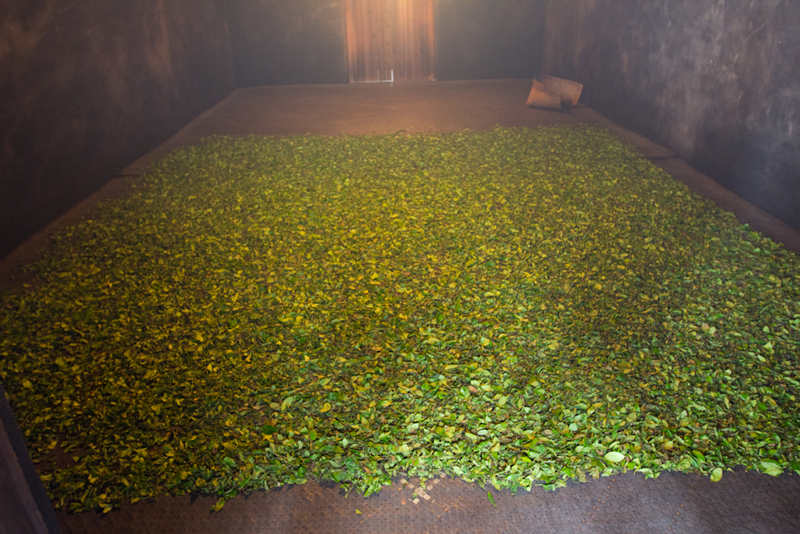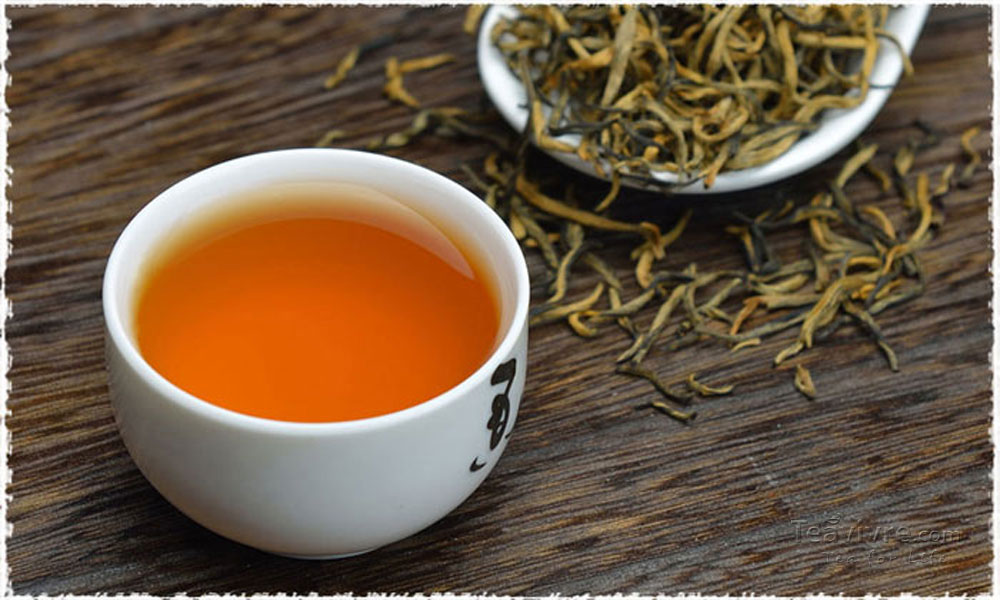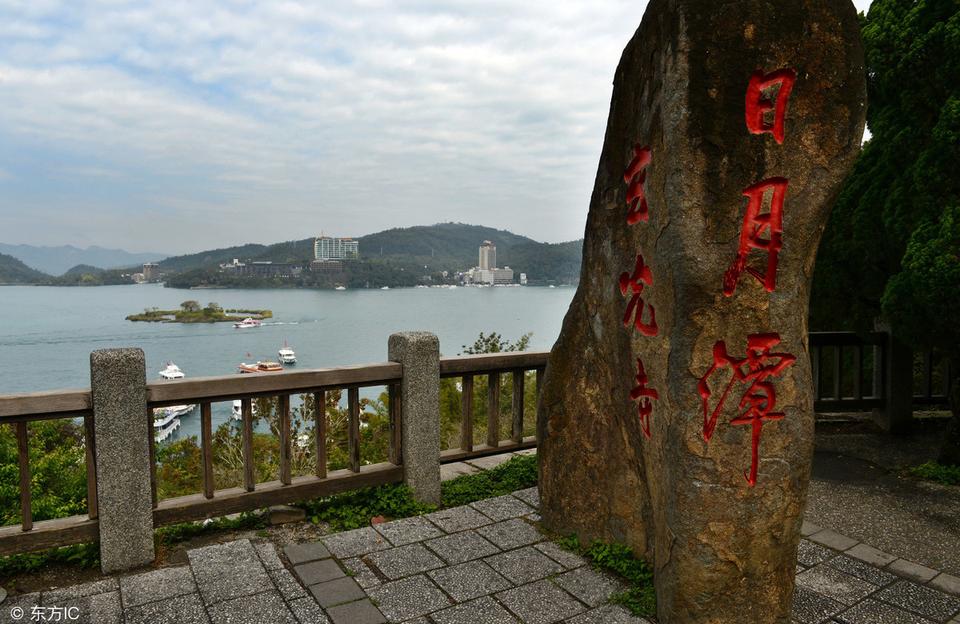The production process of high-grade Qimen Gongfu black tea what is the difference between the flavor characteristics of smoked Qimen Gongfu tea and that of non-smoking
After several hours on the bus, I found myself in a small mountain village. A friend of mine who grew up here kindly offered to be my guide for two days. Many pickers returned from the tea garden, baskets full of small, tender leaves. There are other people next to their shop, each of whom wants to buy the leaves from the picker at the best price. The leaves are sorted by size; the smallest lead makes the best tea and therefore the most expensive. Later in the afternoon, tea farmers buy tea from them collected during the day. The leaves are oxidized overnight, shaped and dried the next day. The smallest leaves--used to make the highest grade of Qihong--are hand-molded in pots, a time-consuming task that requires a lot of experience and skill. The molding machine is used for low-grade Qimen black tea. Qihong has three different leaf shapes: Qihong: long and straight leaves, tightly intertwined; Mao Feng: straight and tightly intertwined; Conch: curly

The peasants couldn't explain clearly to me the difference between qimen and maofeng. It looks like Maofeng's leaves are slightly larger. Red can be placed in the oven or placed on the flame of the basket to dry. The former has a lighter, fresher taste with citrus fruit notes. The latter and more traditional drying result in smoky and stronger teas. The smoke is not overwhelming, though; it harmonizes perfectly with the natural flavor of the leaves. I personally prefer the smoked version. During these two days, I had the privilege of tasting dozens of exotic black teas from different producers, ranging from family-run businesses to small tea factories. They are all produced by the same family, with tiny leaves and completely handmade. Smoked Qimen black tea is even more demanding because only 250 grams of leaves can be processed in the basket at a time, while only a few kilograms can be dried in the oven. So most tea leaves are not smoked, and the smoking process is also very short. I had to make it clear that the smoked version required 45 minutes in the basket instead of 30. I am very happy with this result! The two teas taste completely different, even though they are made from leaves from the same garden, picked at the same time, and processed by the same farmer; the difference lies in the final step of making: drying the leaves. I've seen several green tea varieties produced, but this one really fascinates me. The leaves burned on a large sheet of scorching embers, like meat on a giant barbecue grill. The grille is slanted, rocking the fort and the back; so during heating, the leaves slide slowly from one end to the other to prevent oxidation. The second and final step is drying; farmers put the leaves in a large oven instead of an electric stove like Qi Hong. Because of the cold weather, my old supplier hasn't received the new tea. So I moved from store to store looking for alternatives; high quality, but also very high prices! Compared with a year ago, the renminbi has appreciated by more than 30 per cent against the euro. Even if the price remains unchanged, Nanshan tea leaves will still cost 30% this year! Moreover, since China's economy is still growing at a high speed, prices are higher than a year ago!
Important Notice :
前街咖啡 FrontStreet Coffee has moved to new addredd:
FrontStreet Coffee Address: 315,Donghua East Road,GuangZhou
Tel:020 38364473
- Prev

Comparison of taste between Qimen Gongfu black tea and Yunnan ancient tree Dianhong Kungfu Tea the blending proportion of English breakfast black tea and what kind of black tea is used at the bottom of the tea
Today, the warmth of the sun is obscured by a layer of mist, and the sky becomes a rose yellow and light blue watercolor painting. I have been longing for strong black tea all winter-malt, spicy and earthy-but now seems to be the best time to taste two kinds of black tea, Fengqing Dianhong and Qimen Maofeng. Come to our old teahouse.
- Next

How long should Taiwan red jade black tea be soaked in water temperature to taste good? What are the characteristics of authentic Taiwanese tea No. 18 black tea?
An unusual black tea from Taiwan, Yuchi Hongyu Black Tea, also known as Hongyu Tea. This tea is made from Hongyutai tea variety 18. Red jade black tea is also called Taiwan tea 18, which is a new tea variety developed by Taiwan Tea Research Institute, so this tea gets its name. Our red jade black tea is made in Taiwan
Related
- Why are the coffee in some coffee shops not enough after being frozen? What should I make up for my American latte cappuccino coffee after being frozen?
- How much water does it take to steam coffee by hand? Why is the coffee brewing and steaming time 30 seconds? What is the purpose of steaming coffee?
- The suspected drink contains too much caffeine! Overlord Tea Lady responds urgently!
- Starbucks rejects antique paper coupons?! Netizen: Missed marketing opportunities!
- What ratio of water temperature and ground does the smart cup method use to press coffee? The difference between brewed coffee and filtered coffee?
- What is the standard process for the purpose of coffee cup testing? What is the difference between hand-brewed coffee and cup testing?
- How to use hand-brewed coffee paragon small golden balls? How does cold coffee lock in the aroma of coffee?
- Is American coffee black? What is the difference between American coffee and drip coffee?
- Unexpected! Well-known tea beverage brand Lele Tea will withdraw from the Zhengzhou market!
- Starbucks enters the fashion and beauty industry?! Netizen: Give me an ice American eye cream

